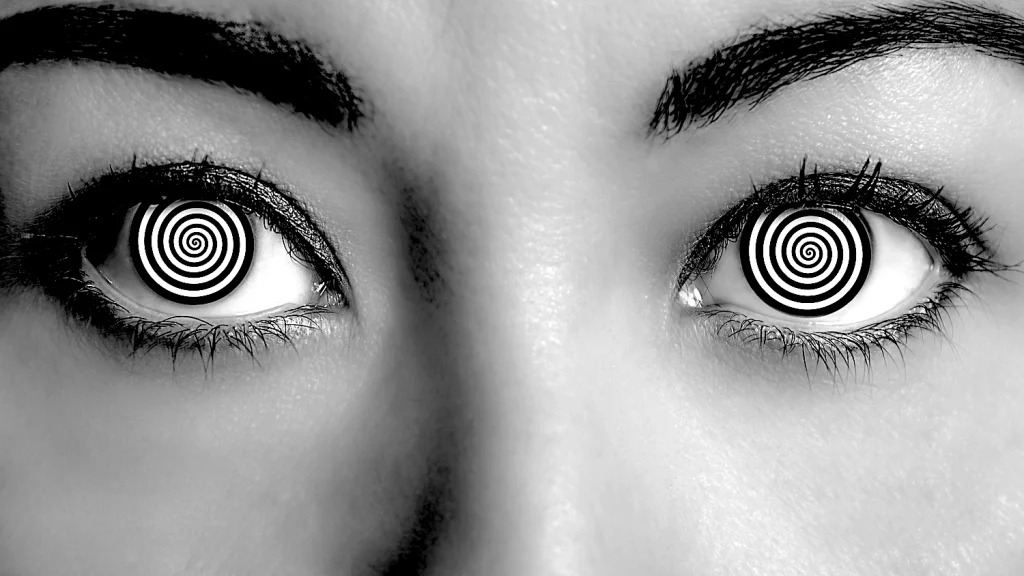You've probably heard of hypnosis, but what about self-hypnosis? This fascinating practice involves techniques such as visualization and progressive muscle relaxation, enabling you to tap into your subconscious mind. Consider this, wouldn't it be empowering to decode messages from your subconscious or to unwind and de-stress your body at will? Well, that's just a glimpse of what self-hypnosis can offer. So, let's embark on this intriguing journey of self-exploration and wellness. Are you up for the challenge?
Understanding Self-Hypnosis
Diving into the realm of self-hypnosis, you need to grasp that it's a technique allowing you to focus your mind, induce a state of relaxation, and tap into your subconscious. But first, let's clear some hypnosis misconceptions. It's not mind control, nor does it induce sleep. It's simply a tool for creating a heightened state of focus and receptivity.
Hypnosis history dates back as far as the ancient Egyptians, who practiced a form of it in their 'sleep temples'. The term 'hypnosis' itself, however, was coined only in the 19th century by Scottish surgeon James Braid. He noticed that fixation on a single object or idea could lead to a trance-like state, which he called 'neuro-hypnotism', later shortened to 'hypnosis'.
In the 20th century, hypnosis became associated with stage entertainment and mind control, leading to many misconceptions. This has unfortunately overshadowed its true potential as a powerful tool for personal development.
When you practice self-hypnosis, you're not surrendering control, but taking charge of your own mind, dispelling fears, and instilling positive changes. You're becoming your own best hypnotist.
The Power of the Subconscious Mind
Harnessing the power of your subconscious mind can unlock untold potential and facilitate profound personal change. Your subconscious mind is like a vast, limitless storehouse of your life experiences. It's where your beliefs, memories, and skills reside.
Every event you've ever encountered, every emotion you've ever felt, it all gets stored in this powerful part of your brain.
Subconscious programming is a technique that taps into this power. It's the process of feeding your subconscious mind with new ideas and perspectives. By consistently sending these positive, empowering messages, you're essentially reprogramming your belief system and behavior patterns. That's why it's such a vital component of self-hypnosis techniques.
Mental conditioning, another key aspect of this process, works hand in hand with subconscious programming. It's about training your mind to respond automatically to certain stimuli or situations in a specific way. It's like forming a new habit, but at a much deeper, subconscious level.
In essence, by understanding and harnessing the power of your subconscious mind, you're not only changing your thoughts and actions, but you're also reshaping your reality. It's a transformative journey that begins from within.
Preparing for Self-Hypnosis
Before you delve into self-hypnosis, it's crucial that you properly prepare your mind and environment to ensure the most effective session. A calm, quiet and comfortable space is key. Meditative settings can significantly enhance your self-hypnosis experience. You may choose a tranquil outdoor setting or a peaceful room in your home. Ensure it's a place where you won't be disturbed.
Next, it's time to prime your mind. Start by clearing your mind from all distractions. Take a few moments to simply breathe and let go of the day's stresses. This helps to create a receptive mental state, ready for self-hypnosis.
Additionally, understanding hypnotic triggers can further enhance your preparation. These triggers are specific stimuli that prompt your mind to enter a hypnotic state. They can be anything from certain words or phrases, to particular sounds or visual cues. Everyone's triggers may vary, so it's essential to discover what works best for you.
Self-Hypnosis Technique: Visualization
Now, let's explore the visualization technique in self-hypnosis, a powerful tool that can help you tap into your subconscious mind. Visualizing can create a bridge between your conscious and subconscious thoughts, promoting a deeper understanding of your inner self.
Think of visualization as a form of Visual Art Therapy, which uses imagery, color, and shape to explore emotions and experiences. When you use self-hypnosis, you're painting mental pictures that can lead to profound insights and emotional release. It's a creative process that taps into the subconscious mind, helping you to understand and resolve inner conflicts.
Dream Interpretation is another essential part of this process. By visualizing your dreams, you're not only exploring your subconscious mind, but also decoding messages your mind is trying to convey. It's about understanding the symbols and narratives of your dreams, and using them to gain insights about your feelings, thoughts, and experiences.
Progressive Muscle Relaxation Guide
Let's dive into progressive muscle relaxation, a stress-busting technique that helps you unwind by tensing and then releasing each muscle group in your body. It's a form of self-hypnosis that aids muscle tension relief, allowing you to de-stress and relax effectively.
Start by finding a quiet place where you won't be disturbed. Sit or lie down, ensuring you're comfortable, and then close your eyes. Begin by focusing on your toes, curling them for a few seconds, and then releasing. Feel the tension melt away as you do so.
Next, move to your legs, tensing and relaxing them. Continue this process, working your way up through each muscle group – your stomach, chest, arms, and finally, your face. Make sure to spend enough time on each area, don't rush it. The slower you go, the more you'll feel the relief.
Incorporated as one of the sleep improvement methods, progressive muscle relaxation can help you fall asleep faster and achieve a deeper, more restful sleep.
The Art of Positive Affirmations
While progressive muscle relaxation helps soothe your physical stress, mastering the art of positive affirmations can significantly uplift your mental state. Positive affirmations are powerful, positive statements that you continuously repeat to yourself, either out loud or in your mind. They're not just feel-good quotes or motivational phrases. They're serious tools that can stimulate a significant shift in your mindset.
The effectiveness of affirmations lies in their ability to replace negative thoughts and self-talk with positive ones. This is where the affirmation effectiveness comes in. It's important to choose affirmations that resonate with you, that feel true, and that help you envision a better future. They're a tool to remind you of your worth, your potential, and your goals.
There's a manifestation correlation between what you affirm and what appears in your life. By regularly practicing affirmations, you're essentially programming your mind to manifest the life you desire. It's like planting seeds in a garden. With time, care, and repetition, these seeds grow into reality.
Implementing Suggestion Techniques
To harness the power of self-hypnosis, you need to master the art of implementing suggestion techniques effectively. Suggestion delivery is a crucial part of this process. It's all about how you convey your goals and desires to yourself during the hypnotic induction.
Remember, you're trying to influence your subconscious mind, not your rational, conscious mind. Your suggestions should be clear, precise, and positive. Instead of saying, 'I don't want to be stressed,' say, 'I am calm and relaxed.' Your subconscious responds well to positive affirmations and images.
The timing of your suggestion delivery also matters. The best time to deliver your suggestions is when you're deeply relaxed during the hypnotic induction phase. This is when your subconscious mind is most receptive to new ideas and beliefs.
Also, repetition is key. The more you repeat your suggestions, the more ingrained they become in your subconscious. It's not a one-time deal. You need to practice your self-hypnosis regularly, ideally daily, for it to be effective.
Advanced Self-Hypnosis Methods
Delving deeper into the realm of self-hypnosis, you'll uncover advanced techniques that can significantly amplify your results. Hypnotic Trance States, for instance, is one such technique wherein you reach a relaxed state of heightened focus and concentration. This state allows for deeper rapport with your subconscious mind, giving you greater control over your thoughts, feelings, and behaviors.
You can use this state to address and resolve specific issues, such as phobias, addictions, or emotional imbalances – a practice commonly referred to as Therapeutic Hypnosis Applications. Here, you introduce positive affirmations and suggestions directly into your subconscious, which in turn, can create profound changes in your mental and emotional wellbeing.
When you venture into advanced self-hypnosis, it's essential to remain patient and persistent. It's not uncommon for these techniques to feel challenging at first. But with regular practice, you'll find yourself slipping into hypnotic trance states more easily and utilizing therapeutic hypnosis applications more effectively.
Benefits of Regular Self-Hypnosis
Regular self-hypnosis can become your personal powerhouse, offering numerous benefits that impact your overall wellbeing and quality of life. It's a tool that you can use anywhere, anytime, to help manage a variety of mental and physical health issues.
One significant benefit is hypnosis for anxiety. By regularly practicing this technique, you can better manage stressors, fostering a calmer, more peaceful mind. It's a natural, side-effect free method of managing anxiety without the need for medication.
Another great benefit is self-hypnosis for pain management. If you're suffering from chronic pain, self-hypnosis can help you alter your perception of pain, reducing its intensity. It's not a cure-all, but it's a powerful adjunct to traditional pain management strategies.
Aside from these specific applications, regular self-hypnosis can also improve your sleep, boost your confidence, and enhance your focus and concentration. It's a transformative technique that empowers you to take control of your mind and body.
Overcoming Challenges in Self-Hypnosis
While embarking on your journey with self-hypnosis, you might encounter a few roadblocks, but don't worry, these can be overcome with the right strategies. One of the biggest challenges you might face are hypnotic barriers, obstacles that prevent you from fully immersing yourself in the hypnosis experience. This could be due to reservations, fears, or misconceptions you may have about hypnosis.
Hypnosis misconceptions are a common hypnotic barrier. You may believe, for example, you'll lose control or reveal secrets while under hypnosis. In reality, hypnosis is a state of focused attention where you're more open to suggestion, but you still have control.
Overcoming these barriers requires understanding and acceptance. Know that it's okay to have reservations. It's part of the process. Accept those feelings and then release them. Use affirmations to reinforce your positive intentions and overcome any negativity.
Conclusion
In conclusion, you've got the power to tap into your subconscious mind using self-hypnosis techniques.
Visualization and progressive muscle relaxation can help you unwind and gain profound insights.
Regularly practicing these methods can boost your overall well-being and help you tackle inner conflicts.
So, don't shy away from the challenges – embrace them as part of the journey.
Remember, it's all about creating a more harmonious relationship with your inner self.
Dr. John Renoldson is a distinguished professor of Clinical Research Hypnotherapy He holds a PhD in Clinical Psychology and specializes in hypnotherapy and scientific research to enhance therapeutic outcomes. Dr. Renoldson has authored numerous peer-reviewed articles on the efficacy of hypnosis in treating conditions.




